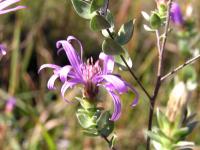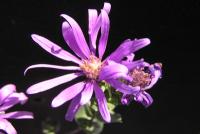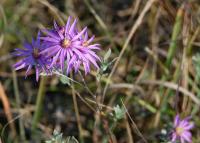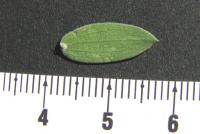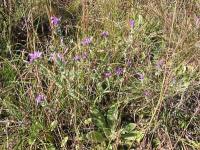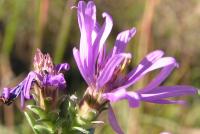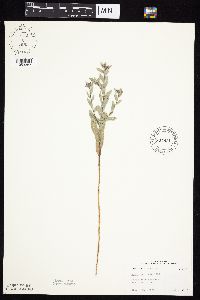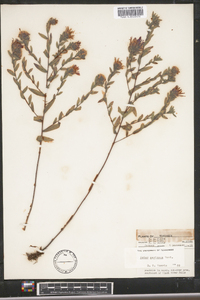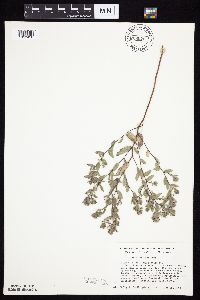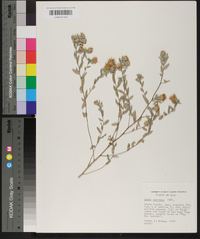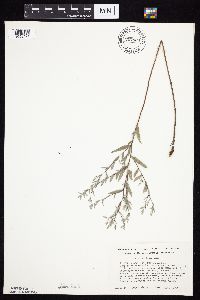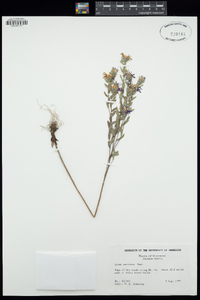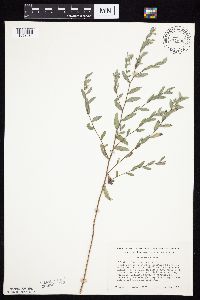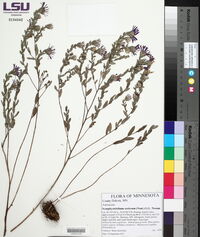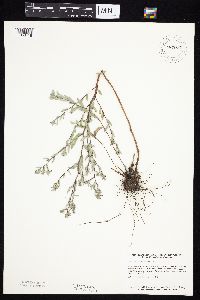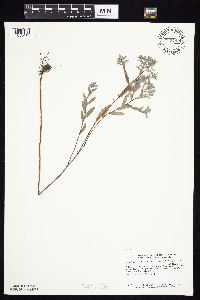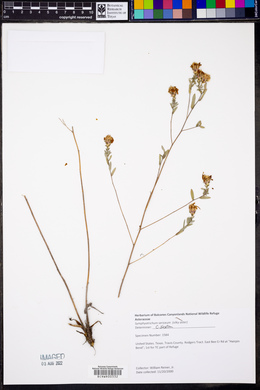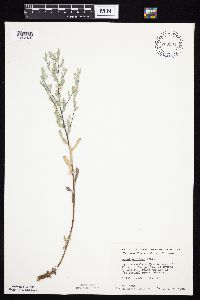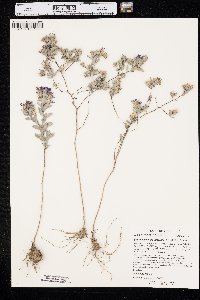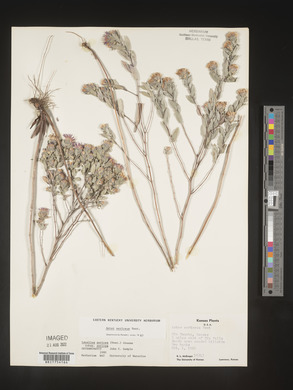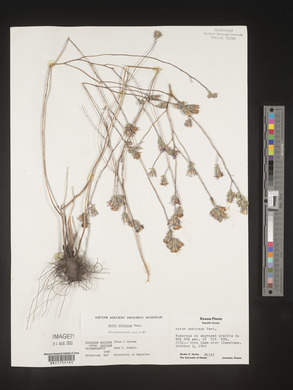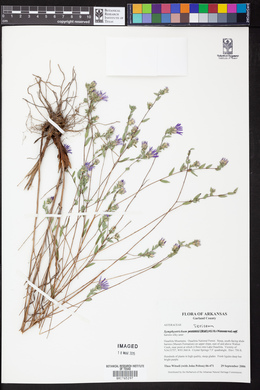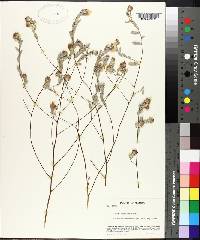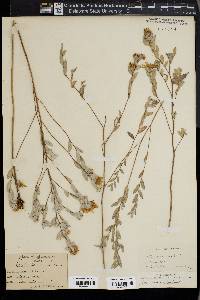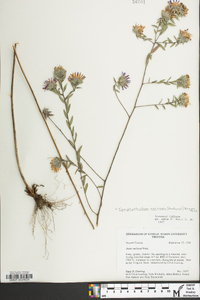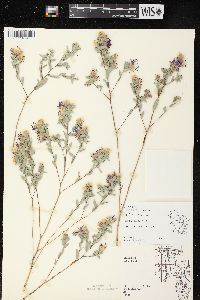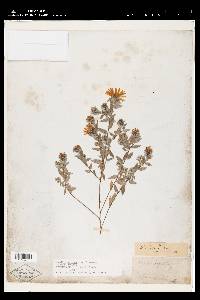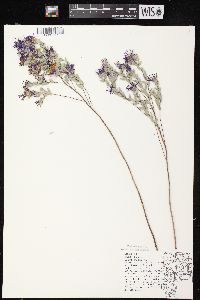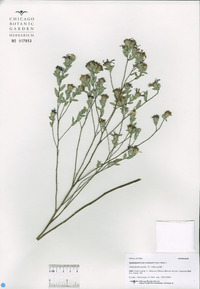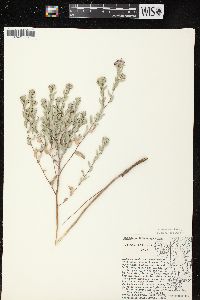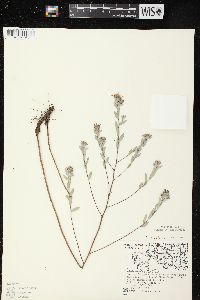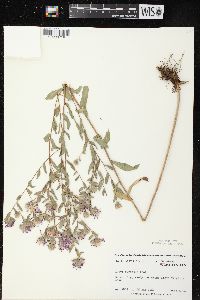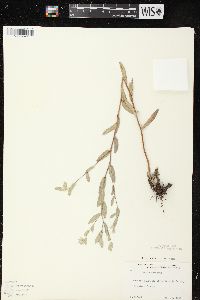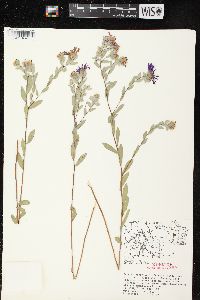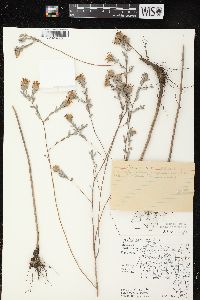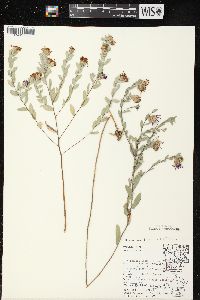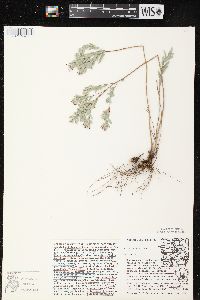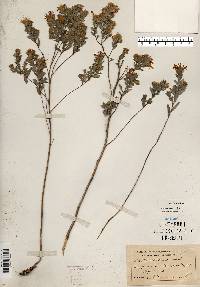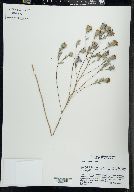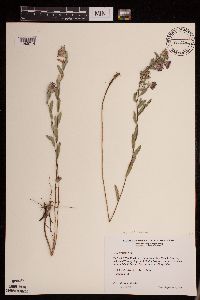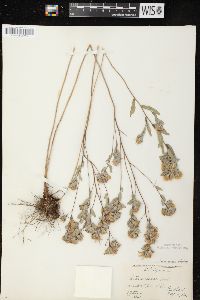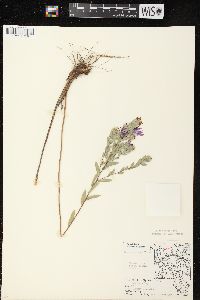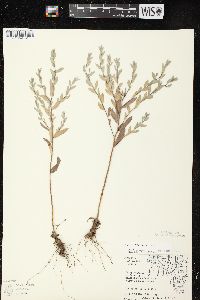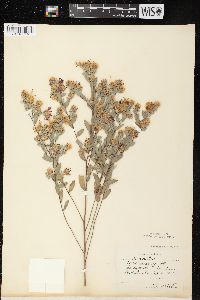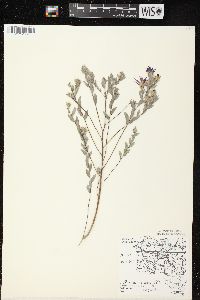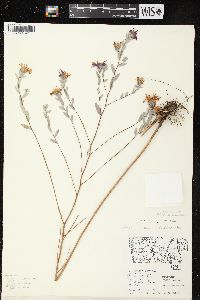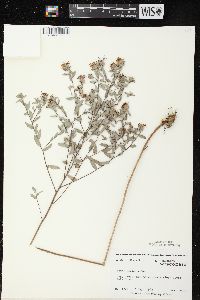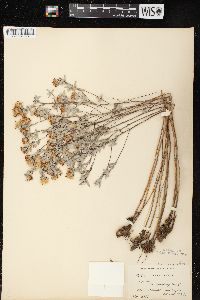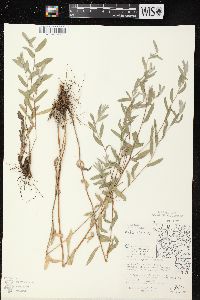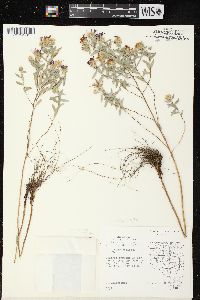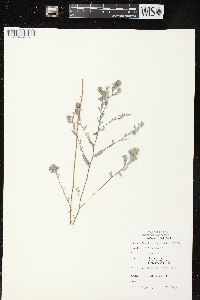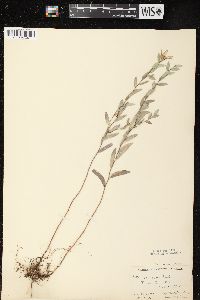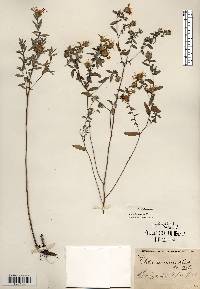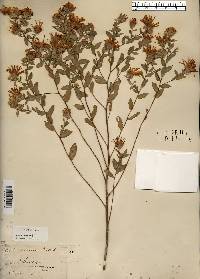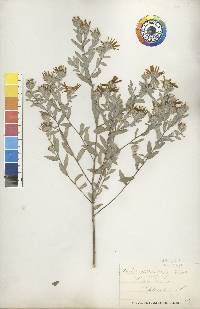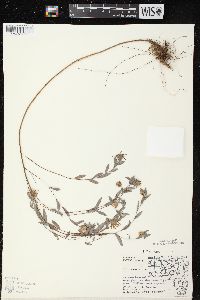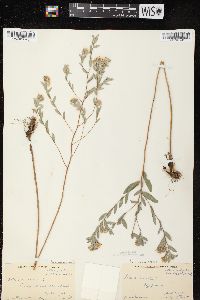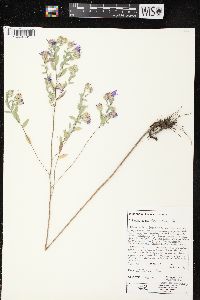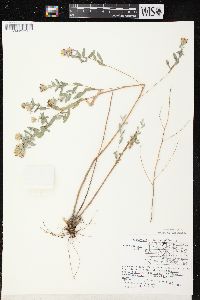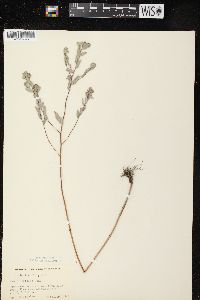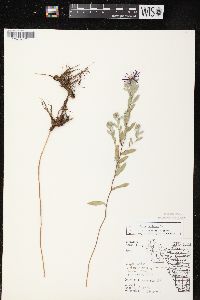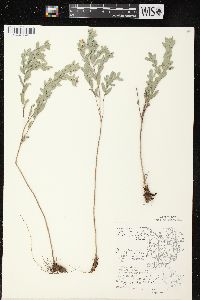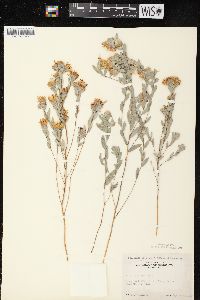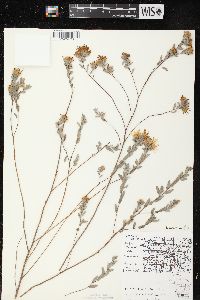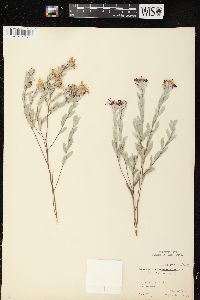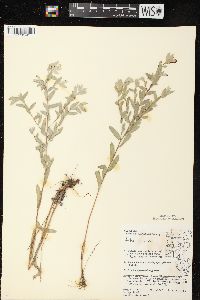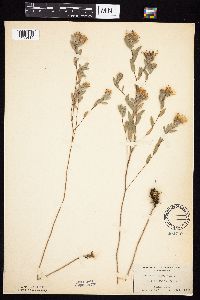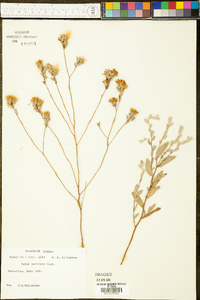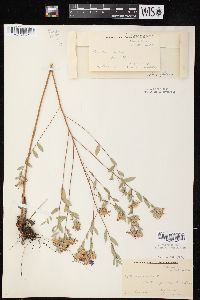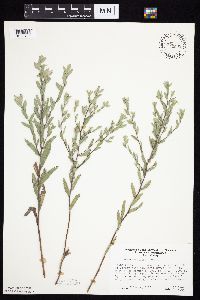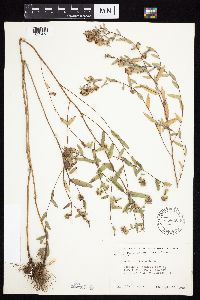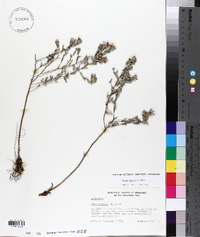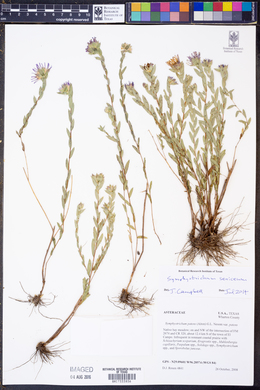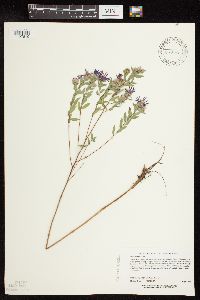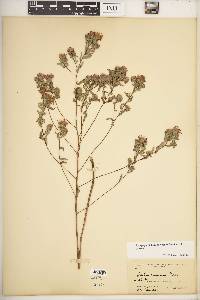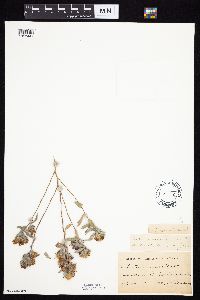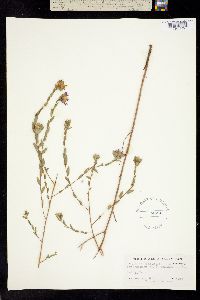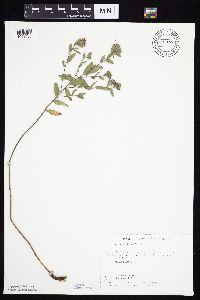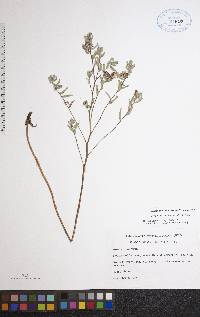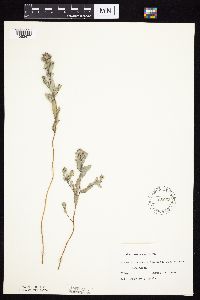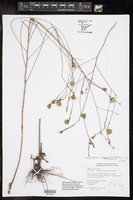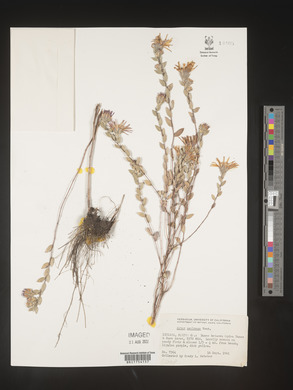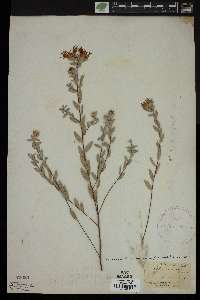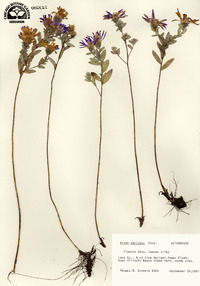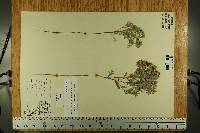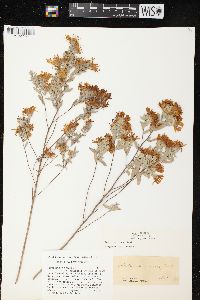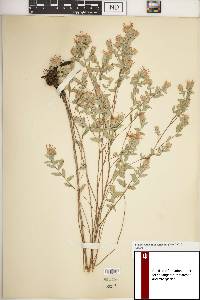
|
|
|
|
Family: Asteraceae
Western Silver American-Aster, more...western silver aster
[Aster sericeus Vent., moreAster sericeus var. montanus , Aster sericeus var. sericeus Vent., Lasallea sericea Greene, Lasallea sericea subsp. pratensis (Raf.) Semple & L. Brouillet, Virgulus sericeus (Vent.) J.L.Reveal & C.S.Keener] |
Perennials, (20-)30-70 cm, cespitose, eglandular; with short, woody, cormoid caudices, or short rhizomes. Stems 1-5+, ascending to erect (thin, grayish brown to dark brown), glabrous proximally, densely canescent distally. Leaves (silvery) firm, soft; basal withering by flowering, sessile, blades (1-3 nerved) elliptic-lanceolate, 10-40 × 5-15 mm, bases cuneate, weakly sheathing, margins usually entire, rarely remotely serrate, piloso-ciliate, apices acute, faces less copiously hairy than cauline; proximal cauline withering by flowering, sessile, blades oblanceolate or oblong to linear-lanceolate, 15-30(-50) × 4-10 mm, slightly and progressively reduced distally, bases rounded, subclasping, margins entire, silky-pilose, apices obtuse to acute, mucronulate, faces sparsely to densely silky-pilose; distal sessile, blades lanceolate, 10-30 × 5-8 mm, little reduced distally, bases cuneate, margins entire, apices acute, mucronate, faces ± densely silky. Heads in open, paniculiform arrays, branches sparse, fastigiate, often arching (1-5+ per branch). Peduncles subsessile or 0.5-3(-5) cm, densely sericeo-strigose, bracts crowded, 4-8(-10) mm, grading into phyllaries. Involucres campanulate to cylindric, (5-)7.5-10 mm. Phyllaries in 3-5(-6) series, outer ovate with expanded distal portion [(4-)5-6 mm], mid ovate-lanceolate [6-8(-10) mm] with expanded green portions, inner linear, unequal or sometimes subequal, outer often foliaceous, bases (mid) scarious, margins silky, green zones restricted to expanded distal 1 / 2 - 2 / 3 (obscured by hairs), apices (outer) spreading or squarrose to reflexed, acute, mucronulate, faces densely long-silky. Ray florets (10-)15-30; corollas usually rose-purple to deep purple, rarely white, laminae 8.5-11 × 1-1.5 mm. Disc florets (15-)25-35; corollas pink turning purple, (5-)5.5-7 mm, tubes shorter than narrowly funnelform throats (both thinly puberulent), lobes deltate, 0.7-0.9 mm. Cypselae purple or brown, obovoid, not compressed, 2-3 mm, 7-10-nerved (prominent), faces glabrous; pappi whitish or tawny, 6-7 mm. 2n = 10, 20. Flowering Aug-Oct. Open, dry, deep, sandy or loamy soils, broken limestone outcrops, open-wooded bluffs, open woods, open calcareous hammocks, prairies, fields, sand barrens, dunes, dry banks, rarely acidic shield rocks; 100-500+ m; Man., Ont.; Ark., Ga., Ill, Ind., Iowa, Kans., Mich., Minn., Mo., Nebr., N.Dak., Ohio, Okla., S.Dak., Tenn., Tex., Wis.; West Indies (Bahamas). Symphyotrichum sericeum is known in the Bahamas as S. lucayanum (Britton) G. L. Nesom [syn. Aster lucayanus Britton, Virgulus lucayanus (Britton) Reveal & Keener]. It is of conservation concern in Indiana, Michigan, and Canada. Symphyotrichum sericeum is distinct and unlikely to be confused with other species due to its silvery-silky leaves and phyllaries, open arrays, and cormoid rootstocks. Aster sericeus forma albiligulatus Fassett is a white form of the species, in contrast to the typically purple forma sericeus; these do not deserve formal recognition.
Stems clustered on a short branched caudex, brittle, wiry, 3-7 dm, ±branched upwards, thinly sericeous, or glabrate below; lvs sericeous, entire, the basal oblanceolate and petiolate, but these and the ones on the lower half of the stem soon deciduous, the others sessile but only slightly or not at all clasping, lanceolate or lance-ovate to oblong or elliptic, to 4 נ1 cm; heads several or many in a widely branched corymbiform or paniculiform infl, often clustered toward the branch-tips; invol sericeous, 6-10 mm, its broad, acute bracts several-seriate but seldom much imbricate, their leafy tips often loose or spreading, the larger ones mostly 1.5-3 mm wide; rays 15-25, deep violet to rose-purple (white), 8-15 mm; achenes glabrous, closely 8-12-nerved; 2n=10. Dry prairies and other open places; Mich. to S.D., s. to Mo. and Tex., and irregularly e. in Tenn. Gleason, Henry A. & Cronquist, Arthur J. 1991. Manual of vascular plants of northeastern United States and adjacent Canada. lxxv + 910 pp. ©The New York Botanical Garden. All rights reserved. Used by permission. From Flora of Indiana (1940) by Charles C. Deam All of our specimens and reports come from the six counties shown on the map. Found in very sandy soil on wooded slopes or low dunes. Restricted mostly to the dunes near Lake Michigan. …… Indiana Coefficient of Conservatism: C = 10 Wetland Indicator Status: N/A |
|
|
|
This project was made possible in part by the Institute of Museum and Library Services [MG-70-19-0057-19].
Powered by Symbiota

